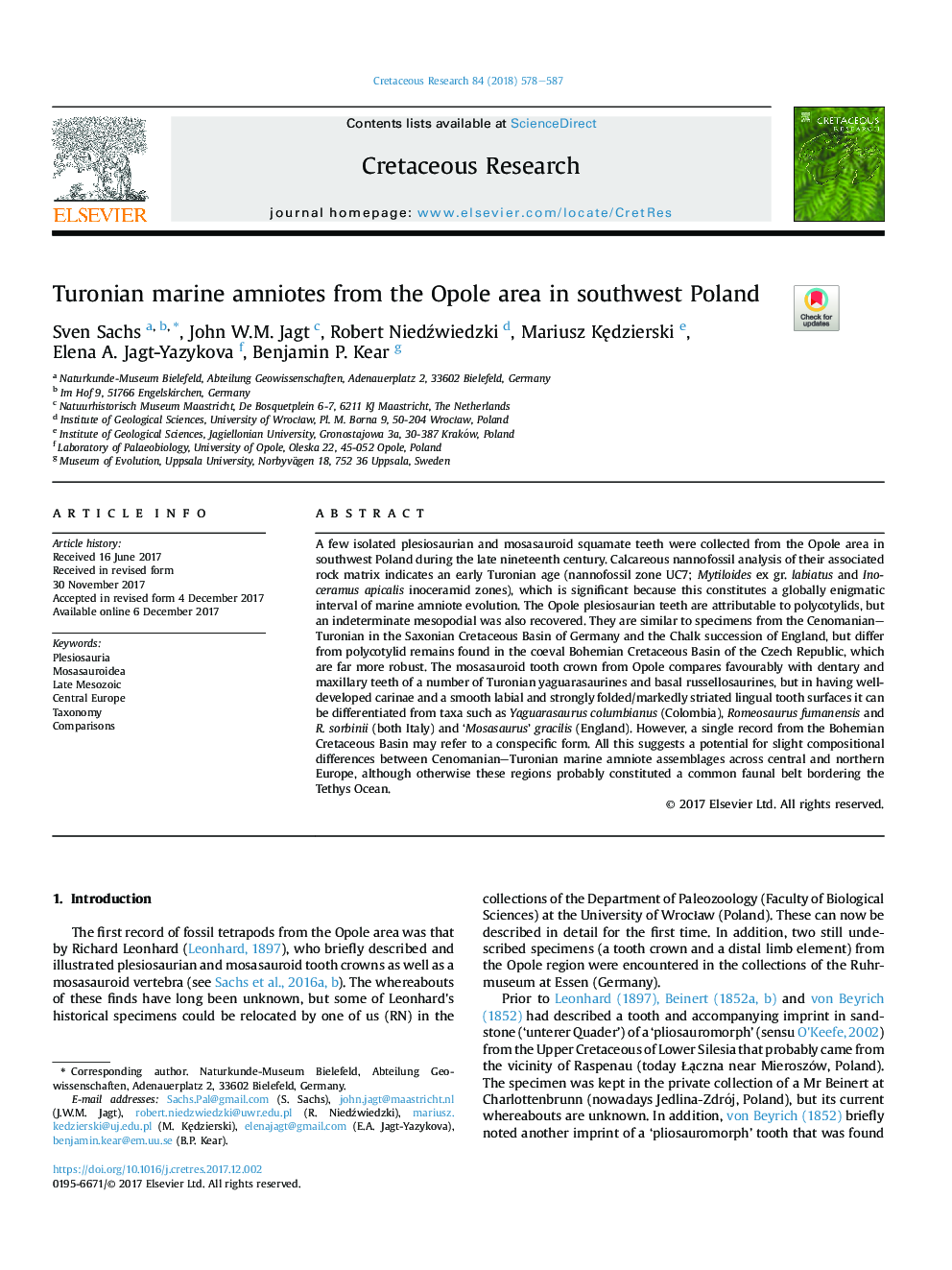| Article ID | Journal | Published Year | Pages | File Type |
|---|---|---|---|---|
| 8916402 | Cretaceous Research | 2018 | 10 Pages |
Abstract
A few isolated plesiosaurian and mosasauroid squamate teeth were collected from the Opole area in southwest Poland during the late nineteenth century. Calcareous nannofossil analysis of their associated rock matrix indicates an early Turonian age (nannofossil zone UC7; Mytiloides ex gr. labiatus and Inoceramus apicalis inoceramid zones), which is significant because this constitutes a globally enigmatic interval of marine amniote evolution. The Opole plesiosaurian teeth are attributable to polycotylids, but an indeterminate mesopodial was also recovered. They are similar to specimens from the Cenomanian-Turonian in the Saxonian Cretaceous Basin of Germany and the Chalk succession of England, but differ from polycotylid remains found in the coeval Bohemian Cretaceous Basin of the Czech Republic, which are far more robust. The mosasauroid tooth crown from Opole compares favourably with dentary and maxillary teeth of a number of Turonian yaguarasaurines and basal russellosaurines, but in having well-developed carinae and a smooth labial and strongly folded/markedly striated lingual tooth surfaces it can be differentiated from taxa such as Yaguarasaurus columbianus (Colombia), Romeosaurus fumanensis and R. sorbinii (both Italy) and 'Mosasaurus' gracilis (England). However, a single record from the Bohemian Cretaceous Basin may refer to a conspecific form. All this suggests a potential for slight compositional differences between Cenomanian-Turonian marine amniote assemblages across central and northern Europe, although otherwise these regions probably constituted a common faunal belt bordering the Tethys Ocean.
Related Topics
Physical Sciences and Engineering
Earth and Planetary Sciences
Palaeontology
Authors
Sven Sachs, John W.M. Jagt, Robert Niedźwiedzki, Mariusz KÄdzierski, Elena A. Jagt-Yazykova, Benjamin P. Kear,
